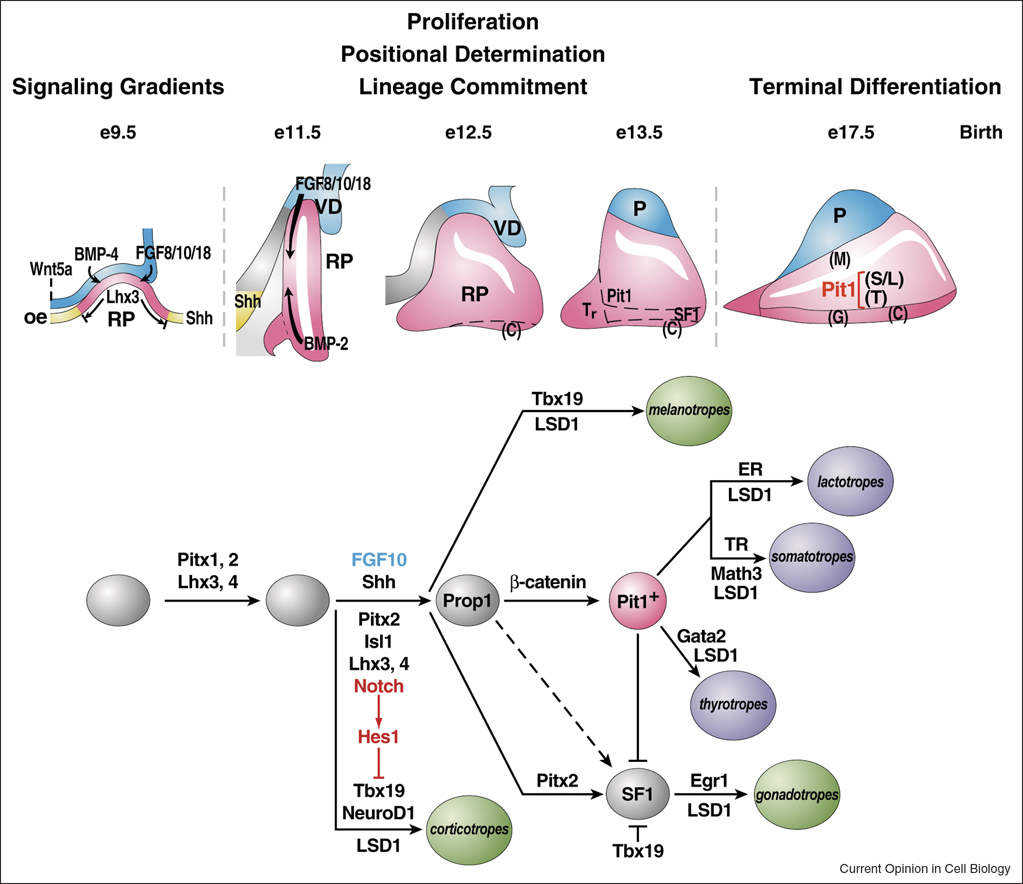Figure 1.
Ontogeny of signaling molecules and selected transcriptional factors during mouse pituitary organogenesis. Ventral diencephalon, which expresses BMP4, FGF8/10/18 and Wnt5, makes direct contact with oral ectoderm and induces the formation of Rathke’s pouch. The opposing dorsal FGF and ventral BMP2 gradients convey proliferative and positional cues by regulating combinatorial patterns of transcription factor gene expression. Pit1 is induced at e13.5 in the caudomedial region of the pituitary gland, which ultimately gives rise to somatotropes (S), lactotropes (L) and thyrotropes (T). Corticotropes (C) and gonadotropes (G) are differentiated in the most ventral region of the gland. The dorsal portion of the Rathke’s pouch becomes the intermediate lobe, containing melanotropes (M). The infundibulum of the ventral diencephalon grows downward and eventually becomes the posterior lobe (P) of the gland. The functions of a number of signaling molecules, transcription factors, and cofactors regulating lineage commitment and terminal differentiation of distinct cell types are delineated in a genetic pathway.

